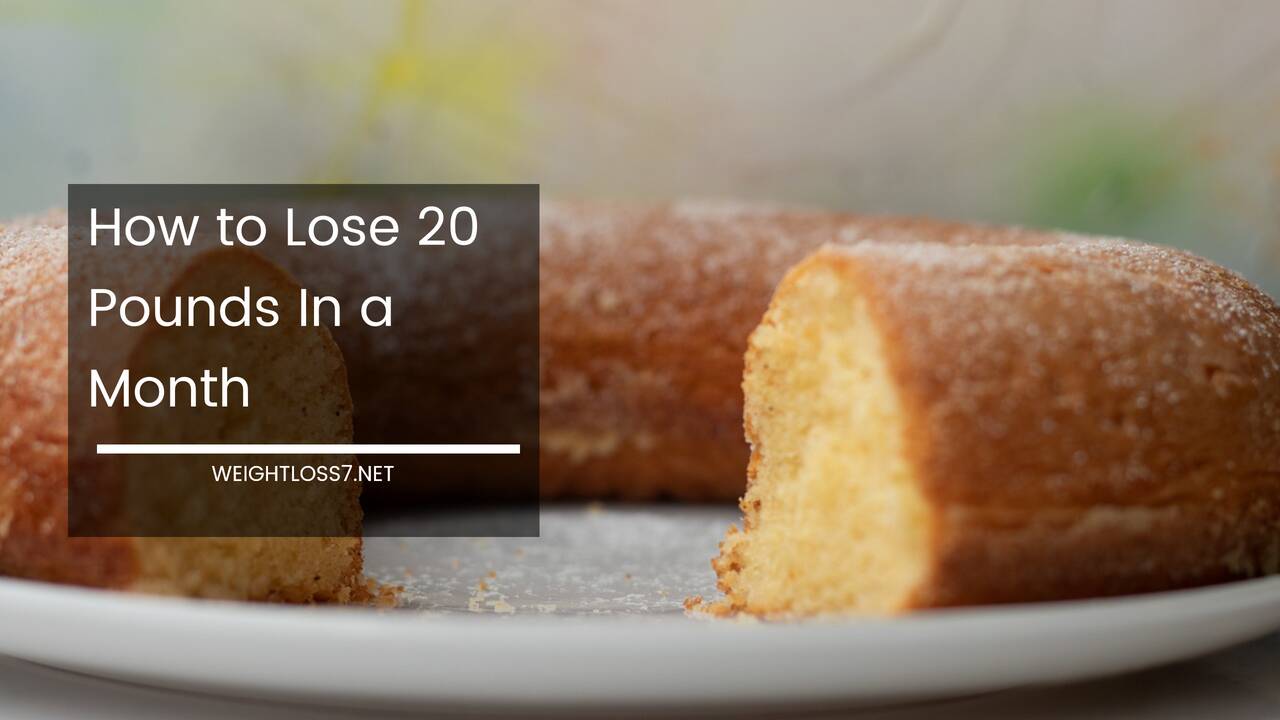How to Lose 10 Pounds in a Month: A Step-by-Step Guide to Effective Weight Loss

How to Lose 10 Pounds in a Month
Are you looking to shed some extra pounds and achieve your weight loss goals? Losing weight can be a challenging journey, but with the right strategies and dedication, it is definitely achievable.
This article will provide you with a comprehensive guide on how to lose 10 pounds in a month, focusing on effective and sustainable methods.
By following these steps and making positive changes to your lifestyle, you can kick-start your weight loss journey and see significant results.
1. The Importance of Healthy Weight Loss
Losing weight not only improves your physical appearance but also enhances your overall well-being. However, it’s important to approach weight loss with a focus on health rather than just aesthetics.
Healthy weight loss involves making sustainable lifestyle changes that promote long-term results and improve your overall health.
2. Setting Realistic Goals: Defining Your Weight Loss Target
Before embarking on your weight loss journey, it’s essential to set realistic goals. Losing 10 pounds in a month is an achievable target, but it requires dedication and consistency.
Consult with a healthcare professional to determine a healthy and realistic weight loss goal based on your individual circumstances.
3. Developing a Calorie Deficit: The Key to Weight Loss
To lose weight, you need to create a calorie deficit by burning more calories than you consume. This can be achieved through a combination of diet and exercise.
By creating a calorie deficit of around 500 to 750 calories per day, you can aim to lose approximately 1 to 2 pounds per week, leading to a total of 8 to 10 pounds in a month.
4. Adopting a Balanced and Nutritious Diet
A balanced and nutritious diet plays a crucial role in any weight loss journey.
Focus on incorporating whole foods such as fruits, vegetables, lean proteins, whole grains, and healthy fats into your meals. Here are some key aspects to consider:
4.1 Understanding Macronutrients: Protein, Carbohydrates, and Fats
Protein helps build and repair tissues, supports muscle growth, and keeps you feeling full and satisfied. Include sources of lean protein such as chicken, fish, tofu, beans, and Greek yogurt in your meals.
Carbohydrates provide energy for your body. Opt for complex carbohydrates like whole grains, legumes, and vegetables, and limit your intake of refined sugars and processed foods.
Healthy fats, such as those found in avocados, nuts, and olive oil, are essential for overall health and help keep you satiated. Moderation is key when consuming fats, as they are calorie-dense.
4.2 Portion Control: Mindful Eating for Weight Loss
Practicing portion control is vital for managing calorie intake. Be mindful of serving sizes and avoid eating until you feel overly full. Opt for smaller plates and bowls to create the illusion of a fuller plate.
4.3 The Power of Meal Planning: Preparing Healthy and Satisfying Meals
Meal planning can be a game-changer when it comes to weight loss. Plan your meals and snacks in advance, ensuring they are balanced and aligned with your calorie deficit goals.
This approach can help you make healthier choices and avoid impulsive and unhealthy food decisions.
5. Incorporating Regular Exercise into Your Routine
Physical activity is an integral part of any weight loss plan. It helps burn calories, boosts metabolism, improves cardiovascular health, and enhances overall well-being. Consider the following exercise strategies:
5.1 Cardiovascular Exercises: Boosting Calorie Burn
Engage in activities like brisk walking, jogging, cycling, swimming, or dancing to elevate your heart rate and burn calories. Aim for at least 150 minutes of moderate-intensity aerobic exercise per week.
5.2 Strength Training: Building Lean Muscle Mass
Incorporate strength training exercises at least twice a week. Resistance training helps build lean muscle mass, which increases your metabolic rate and contributes to weight loss.
5.3 The Benefits of HIIT Workouts: Efficient Fat Burning
High-Intensity Interval Training (HIIT) combines short bursts of intense exercise with active recovery periods. This type of workout can maximize calorie burn and boost your metabolism even after you’ve finished exercising.
6. Prioritizing Sleep and Stress Management
Sleep and stress management are often overlooked but critical factors in weight loss. Lack of sleep and chronic stress can negatively impact your weight loss efforts. Consider the following tips:
6.1 The Connection Between Sleep and Weight Loss
Aim for 7-9 hours of quality sleep per night. Sufficient sleep helps regulate hormones that control appetite and cravings, making it easier to maintain a healthy diet.
6.2 Stress-Induced Weight Gain: Strategies for Stress Management
Implement stress-reduction techniques such as meditation, deep breathing exercises, yoga, or engaging in activities you enjoy. These practices can help manage stress levels and prevent emotional eating.
7. Hydration: The Importance of Drinking Enough Water
Drinking an adequate amount of water is crucial for overall health and weight loss. Water helps curb cravings, boosts metabolism, aids digestion, and promotes detoxification. Aim to drink at least 8 glasses of water per day.
8. Tracking Progress: Monitoring Your Weight Loss Journey
Keep track of your progress to stay motivated and make adjustments as needed.
Regularly weigh yourself, take measurements, and document your achievements. Consider using a weight loss app or journal to record your food intake and exercise routine.
9. Staying Motivated: Overcoming Challenges and Plateaus
Weight loss journeys are not always smooth sailing. It’s important to stay motivated and persistent even when facing challenges or encountering weight loss plateaus.
Seek support from friends, family, or online communities to stay on track and share your experiences.
10. Celebrating Milestones: Rewarding Your Achievements
As you make progress towards your weight loss goal, take the time to celebrate your achievements. Reward yourself with non-food treats like a spa day, a new outfit, or a weekend getaway.
Recognizing your efforts will boost your motivation and help you stay committed to your journey.
Conclusion
Losing 10 pounds in a month is a challenging but realistic goal with the right approach.
By following a balanced diet, engaging in regular exercise, prioritizing sleep and stress management, and staying motivated, you can achieve your weight loss objectives and improve your overall well-being.
Remember that everyone’s journey is unique, so be patient with yourself and celebrate the small victories along the way.
FAQs
1. Is losing 10 pounds in a month safe?
Yes, losing 10 pounds in a month is considered safe for most people, especially when done through a combination of a balanced diet and regular exercise. However, it’s essential to consult with a healthcare professional before starting any weight loss program.
2. Can I target specific areas for weight loss?
Spot reduction is a myth. Weight loss occurs throughout the body and cannot be targeted to specific areas. Focus on overall weight loss and body fat reduction.
3. Can I lose weight without exercising?
While diet plays a significant role in weight loss, incorporating exercise is essential for maximizing results, improving health, and toning your body.
4. How often should I weigh myself during the weight loss journey?
Weigh yourself once a week at the same time of day and under the same conditions to track progress accurately.
5. What should I do if I encounter a weight loss plateau?
Weight loss plateaus are common. To overcome them, consider adjusting your calorie intake or changing your exercise routine to challenge your body in new ways.

















